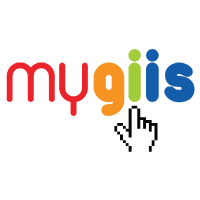The abacus is a counting tool with a prehistoric origin story. It has played an important role throughout human history. The abacus was used for computations long before modern calculators and is a representation of mathematical ability. The abacus was historically used in various contexts throughout cultures and civilizations, for teaching arithmetic and solving problems.
Learning abacus can help children enhance their focus, numerical skills, and cognitive ability. It may improve their grasp of numbers and mathematical operations. By introducing abacus training into a child's daily routine, parents and teachers can provide a hands-on method to learning maths fundamentals after their Tokyo international school admission.
Early maths skill acquisition is vital for children to provide the groundwork for later academic achievement. Mastering the abacus from an early age can help children enhance their focus, numerical skills, and cognitive capacities. This hands-on approach helps young minds better grasp numbers and arithmetic processes. It builds strong numerical competence that will help them well in their academic endeavours.
Benefits of Learning Abacus
Learning abacus can improve mental maths, focus, and spatial reasoning, among other functions. It encourages a thorough comprehension of mathematical ideas to boost confidence and computation fluency. The abacus stimulates a variety of senses, supporting student's overall cognitive development. Here are the top fifteen advantages kids can gain by learning abacus:
1. Making Calculations Easy
Learning how to operate an abacus can help kids simplify calculations. The abacus's visual and sensory properties help in understanding arithmetic concepts like addition, subtraction, multiplication, and division. Students who use an abacus can improve their attention and concentration while developing their mental maths abilities.
Breaking down difficult problems into smaller, more manageable steps optimizes the process. Furthermore, using tactics like estimating and approximation can speed up decision-making and problem-solving. Simplifying mathematics not only allows children to tackle daily chores and schoolwork with confidence but also helps parents plan for expenses like school admission fees.
2. Memory Retention
Abacus learning improves memory in kids by demanding the mental visualisation of numbers and calculations. This visual-spatial memory practice can help young children to recall information and retain it better. The repeated nature of abacus computations reinforces brain circuits related to memory.
Regular abacus training can help learners improve their memory. This style of learning promotes speedy computations and also improves general cognitive function. Abacus Learning Experience is an effective tool for improving retention of knowledge and cognitive ability in learners of all ages.
3. Helps in Developing Motor Skills
Abacus learning helps to strengthen motor abilities through the alteration of beads. This hands-on technique involves fine motor skills, which promotes agility and hand-eye coordination. Moving beads to make calculations helps toddlers improve their muscle flexibility and precision.
Engaging in physical activity can help them enhance their general motor abilities and perform better in other tasks. The use of an abacus offers a practical means for children to improve their motor skills while also developing focus and mental agility.
4. Boosts Self Confidence
Developing confidence via abacus training is a transforming experience. As kids grasp mental computation using the abacus, they get a sense of accomplishment and confidence. Abacus learning instils a strong foundation in arithmetic abilities, allowing children to handle difficult calculations with ease.
This increased ability enhances their self-esteem, allowing them to face obstacles with confidence. Consistent practice and support help Boosting Confidence via Abacus in kids. It cultivates an optimistic frame of mind, promoting their trust in their powers and potential.
5. Get a Balanced Match of Speed and Accuracy
Abacus learning helps children achieve an optimal balance of speed and precision. Students can improve their computation speed and precision by practising mathematical operations using an abacus. This effective strategy builds a solid foundation in maths by enhancing cognitive powers and attentiveness.
The sensory experience of manipulating beads on the abacus aids learners in visualising and comprehending mathematical topics efficiently. Abacus learning is a flexible tool that can accommodate a variety of learning styles and speeds, making it appropriate for kids of all ages.
6. Enhances Creativity Skills
Abacus learning promotes creativity by activating both sides of a child's brain. Hands-on manipulation of the beads on wires activates the right brain, improving spatial awareness and visualisation abilities. Simultaneously, logic and problem-solving abilities learnt in solving abacus excite the left brain.
This dual activation promotes creative thinking and boosts general cognitive abilities. Children who practise mental arithmetic with an abacus acquire creative approaches to problem-solving and the ability to think outside the box. Abacus learning fosters creativity, making it an effective teaching tool for young brains.
7. Fuel to Kid’s Observation Skills
Abacus learning may help kids improve their observation skills. By handling the beads and visualising the movements, children improve their concentration and attention to detail. This hands-on approach allows kids to identify patterns and sequences, and improve their analytical thinking.
As they gain proficiency with abacus, kids acquire a strong eye for numbers and arithmetic, which improves their problem-solving abilities. This engaging strategy aids in Cognitive Development with Abacus by improving observation skills while promoting a thorough comprehension of fundamental mathematical concepts.
8. Improves Concentration
Abacus training improves children's attentiveness by immersing them in mental computations. The act of visualising and rearranging beads on the abacus involves concentrated attention, which improves their capacity to concentrate on different activities. As kids practise abacus skills, they gain mental discipline and acute attention.
Children who practise abacus calculations regularly can boost their focus and concentration levels. It leads to greater academic performance and achievement with improved cognitive ability. Abacus learning is a unique and efficient approach to improving attentiveness in kids.
9. Provide Them with Better Imaginative and Visual Skills
Abacus learning improves children's imagination and visual abilities by manipulating the beads on the abacus. Children participate in a hands-on experience which promotes creativity and spatial awareness. This style of learning allows students to see numbers and mathematical ideas in a tactile sense.
This process improves their visual-spatial ability, allowing individuals to conceptualise challenges and their solutions effectively. The systematic nature of the abacus fosters creativity in problem-solving. Children who engage in this visual and creative process build a diverse cognitive toolset used across multiple academic areas.
10. IQ Enhancement
Abacus learning can raise IQ levels in kids by boosting cognitive abilities and increasing brain activity. This helps to improve focus and memory retention. Abacus learners frequently demonstrate increases in problem-solving and critical-thinking skills. Visualising and manipulating numbers on the abacus activates both sides of the brain.
The organised nature of abacus practice encourages structured thinking and tactical planning, which contributes to cognitive growth. Cognitive Development with Abacus strengthens children's brains by doing complicated mental calculations, which results in observable increases in IQ levels.
11. Command Over Mathematics
Abacus training gives kids a sound foundation when studying mathematics. By manipulating beads to accomplish computations, students get an in-depth knowledge of number concepts and mathematical operations. This hands-on technique promotes numeric fluency and confidence while solving problems in mathematics.
The organised approach of learning abacus takes kids through increasingly difficult stages. It boosts their mathematical and cognitive abilities. Students who train in abacus have a strong mathematical competence, allowing them to flourish in academic and real-world situations requiring mathematical reasoning.
12. Make Them Competitive
Abacus training provides kids with a competitive advantage in academic settings. Mastering mental arithmetic gives students a competitive advantage in maths contests, standardised testing, and academic tests. The capacity to mentally conduct quick computations allows them to outperform their peers in time-constrained circumstances.
The systematic nature of the abacus program fosters discipline, attention, and tenacity, which are crucial for success in competing settings. Beyond academics, abacus training improves adaptation and resilience, helping people to succeed in dynamic job markets and effectively overcome adversities.
13. Stress Buster
Learning abacus can help relieve stress by offering a relaxing and contemplative outlet. Using centred focus to manipulate beads on the abacus increases mindfulness and relaxation, lowering stress and anxiety levels. Abacus practice provides a relaxing and refreshing experience that promotes mental health.
The rhythmic motions and repeating computations create a state of flow, engrossing kids. It helps avoid outside pressures and problems. The sense of success gained from understanding new concepts and solving challenges promotes confidence and further reduces stress.
14. Makes Mathematics Fun
Abacus training makes maths a pleasant and involved experience. Students participate in hands-on exercises by visualising and manipulating numbers with the abacus, making mathematical ideas more concrete and accessible. The dynamic nature of abacus learning keeps students engaged and interested in maths.
The sense of accomplishment resulting from acquiring new abilities and being proficient in mental maths promotes a good attitude towards mathematics. It exposes kids to the joy and excitement of mathematical inquiry, laying the groundwork for a lifetime love of learning Academic Excellence with Abacus.
15. Helps Children with Dyslexia
Abacus lessons have several advantages for children who are dyslexic. The abacus's visual and sensory nature gives an alternate approach to learning to complement dyslexic learning styles. Children with dyslexia use the abacus to symbolise numbers and execute computations.
The hands-on method improves understanding and retention of mathematical ideas, boosting confidence and academic performance. The structured nature of abacus programs creates a supportive learning environment where dyslexic kids can flourish, instilling a sense of accomplishment and empowerment in their arithmetic ability.
What Can You Teach On An Abacus Counting Frame?
The abacus counting frame provides a diverse platform for developing mathematical abilities. From fundamental arithmetic operations to sophisticated computations, it offers learners a tactile and visual way to explore and comprehend number concepts. Listed below is a detailed guideline for performing basic arithmetic operations on an abacus.
1. Place Values
Placing values on an abacus requires understanding the importance of each bead's location.
● Units: The beads on the right side symbolise units. Every bead in this place counts as one.
● Tens: Moving one place left, the beads in this position depict the number ten. Each of these beads counts as ten.
● Hundreds: Moving leftward, the beads in this position symbolise hundreds. Each bead here represents one hundred.
● Thousands: Beads farther to the left signify thousands, with each bead counted as one thousand.
2. Addition
● Clear the abacus: Confirm that all beads are in their default position.
● Identify the numbers: Determine the numbers to add and arrange them on the abacus by moving the proper beads to represent each digit.
● Begin with the units: Add the beads in the units column. If the sum surpasses nine, move the beads up and transfer them to the tens column.
● Move to the next columns: Repeat the process in the other columns, moving beads accordingly and carrying over to the hundreds and thousands column, if needed.
● Read the result: After all calculations are completed, look at the location of the beads on the abacus to see the result.
3. Subtraction
● Arrange the numbers: Start with a clear abacus and arrange the two numbers you want to subtract within the appropriate positions.
● Start with the units: Begin by removing the beads from the unit column. Move the beads below if required.
● Move to the next columns: If borrowing is required, borrow from the next higher column (tens to units, hundreds to tens, etc.) and modify the beads appropriately. Continue the process for each column.
● Read the results: When all calculations are finished, read the results by examining the position of the beads on the abacus.
4. Multiplication
● Identify the numbers: Clear any previous calculations and arrange the numbers you wish to multiply on the abacus.
● Begin with the multiplier: Start with the multiplier and multiply each digit by the multiplicand, using beads to represent partial products.
● Add the incomplete products: Add all the partial products to reach the final result. If the total in any column exceeds nine, carry it over to the next higher column.
● Read the results: When all computations are finished, read the results by watching the location of the beads.
5. Division
● Identify the numbers: Clear the abacus and determine the dividend and divisor.
● Iterative subtraction: Begin by subtracting the divisor from the dividend repeatedly. Count the number of times until you reach zero or a remainder less than the divisor.
● Count iterations: The quotient is the number of times you subtracted the divisor.
● Calculate the remainder: If there is a remnant, it may be determined by monitoring the location of the beads left on the abacus.
Conclusion
Abacus Benefits for Children go beyond basic arithmetic operations. Beyond refining mathematical skills, learning abacus improves focus, problem-solving ability, and cognitive growth. The tactile experience with the abacus stimulates multiple senses for enhanced knowledge of numbers and mathematical ideas.
Abacus training fosters confidence and resilience, essential qualities for academic success. As children move through the abacus levels, they gain mental flexibility and spatial reasoning skills to prepare them for future challenges. Learning abacus provides children with vital life skills by developing their cognitive abilities, imagination, and endurance.
FAQs
What is the benefit of abacus for kids?
Abacus learning in kids promotes mental agility, improves arithmetic skills, and fosters the capacity to solve problems. The tactile interaction with the abacus improves focus and spatial awareness, and the organised learning technique increases confidence and competence in mathematics.
Is abacus useful in the future?
Yes, abacus skills have lasting significance. While modern science provides calculators and computers, abacus proficiency improves mental maths ability, creative thinking, and attention levels. It promotes an enhanced understanding of mathematical concepts, helpful for rapid and precise calculations.
Is abacus good for the brain?
Yes. Studies have proven that Learning Abacus for Kids is advantageous to brain growth. Regular abacus usage activates several brain areas involved in arithmetic processing, memory, focus, and spatial thinking. It can improve cognitive functioning, greater mental agility and overall brain health.
What age is best for abacus?
Children between the ages of four to six years are ideal for learning abacus. The brain is highly receptive to learning and development in these age groups. However, children older than this age can benefit from abacus lessons. Early exposure maximises the chance for cognitive growth through the abacus.
What is level 1 in abacus?
In abacus teaching, Level 1 typically covers fundamental principles and skills. Students learn to identify and manage the beads to represent numbers. They also understand the construction of the abacus and learn to execute addition and subtraction operations on it. Level 1 is the basis for more advanced levels.
Can a 15-year-old learn abacus?
Yes, a 15-year-old can also learn the abacus. There is no age limit to start learning this skill. Older learners can also acquire this skill with persistent hard work and determination. They can become proficient in abacus computation to receive cognitive benefits.




















































